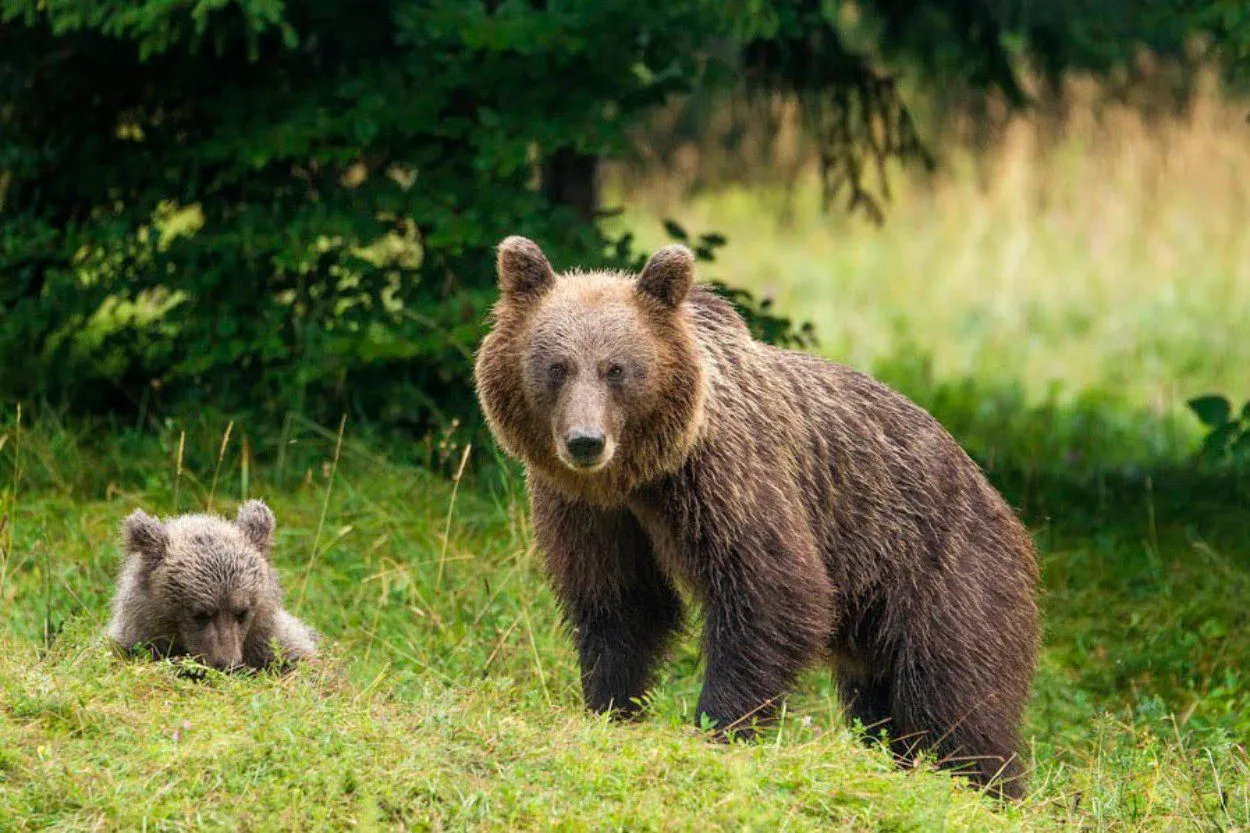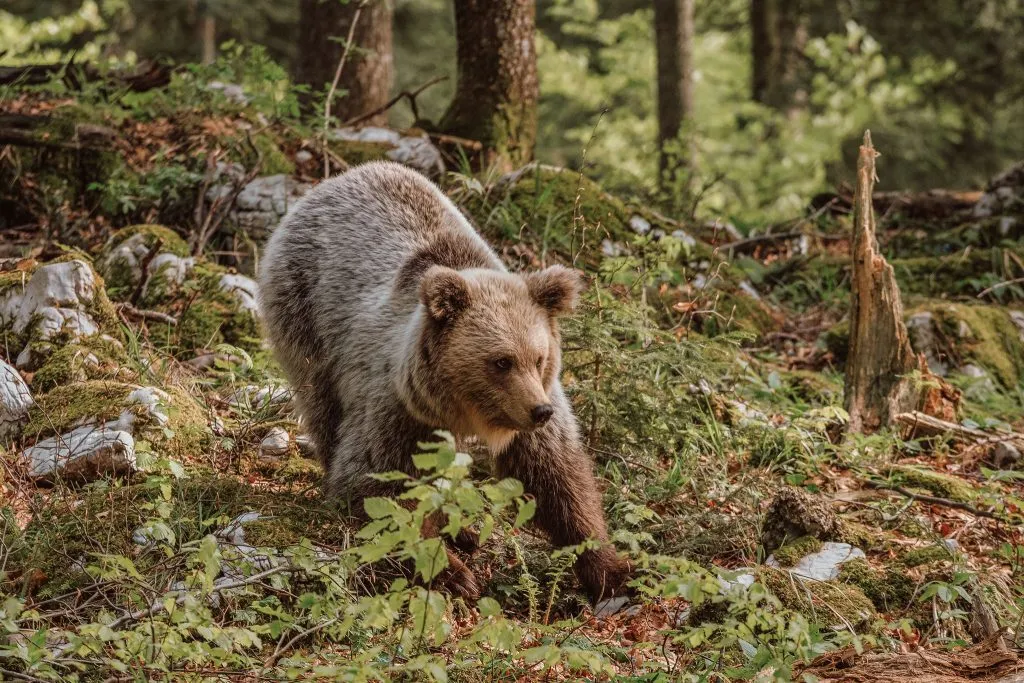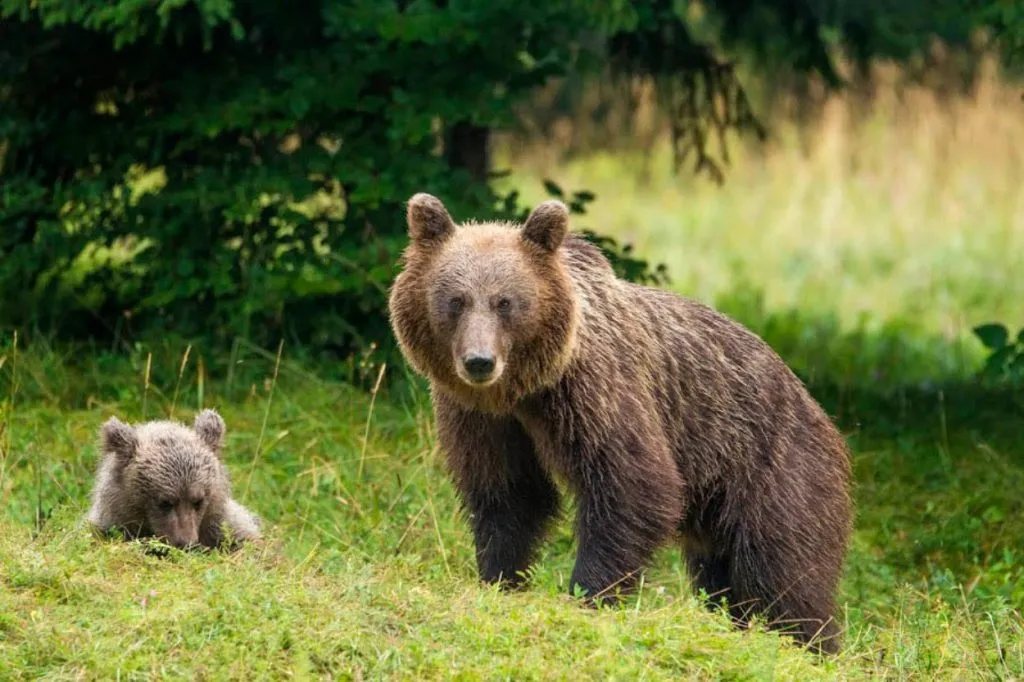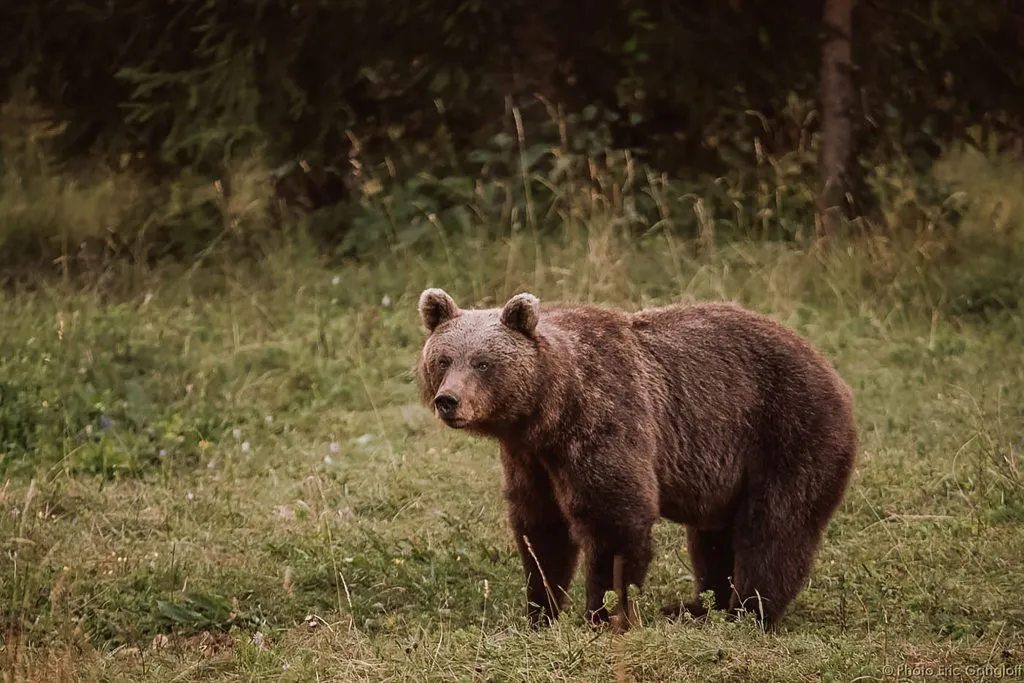Although the safest way of observing this stunning creature in its natural environment is by going bear watching, let us disclose a few facts about the brown bear and some useful tips if you do happen to be so (un)lucky to actually stumble upon one in the Slovenian woods.
Watch out, a human!
Given that Slovenia is one of the most forested countries in Europe (over 60% of the country’s territory), the probability of encountering forest dwellers during mushroom picking, truffle hunting, recreational activities or forestry work, is relatively high. Among these animals are bears, which certainly trigger the greatest fear. The fear of bears is, however, utterly unfounded.
The brown bear might be the largest European land mammal and is potentially dangerous to humans due to its size and strength, yet out of the approx. 900 bears living in Slovenia, bumping into a hostile one is unlikely. This majestic animal doesn’t really pose a danger to humans as most people tend to think.
In reality Man has been the greatest threat to bears throughout history. If bears wanted to survive, they had to know how to avoid humans. Evolution has gifted bears with a preconditioned fear of humans. This is even more evident today, particularly in a densely populated landscape like ours. Therefore, in the vast majority of cases, the bear avoids humans at all costs. But bears can still be dangerous, especially when feeling threatened.
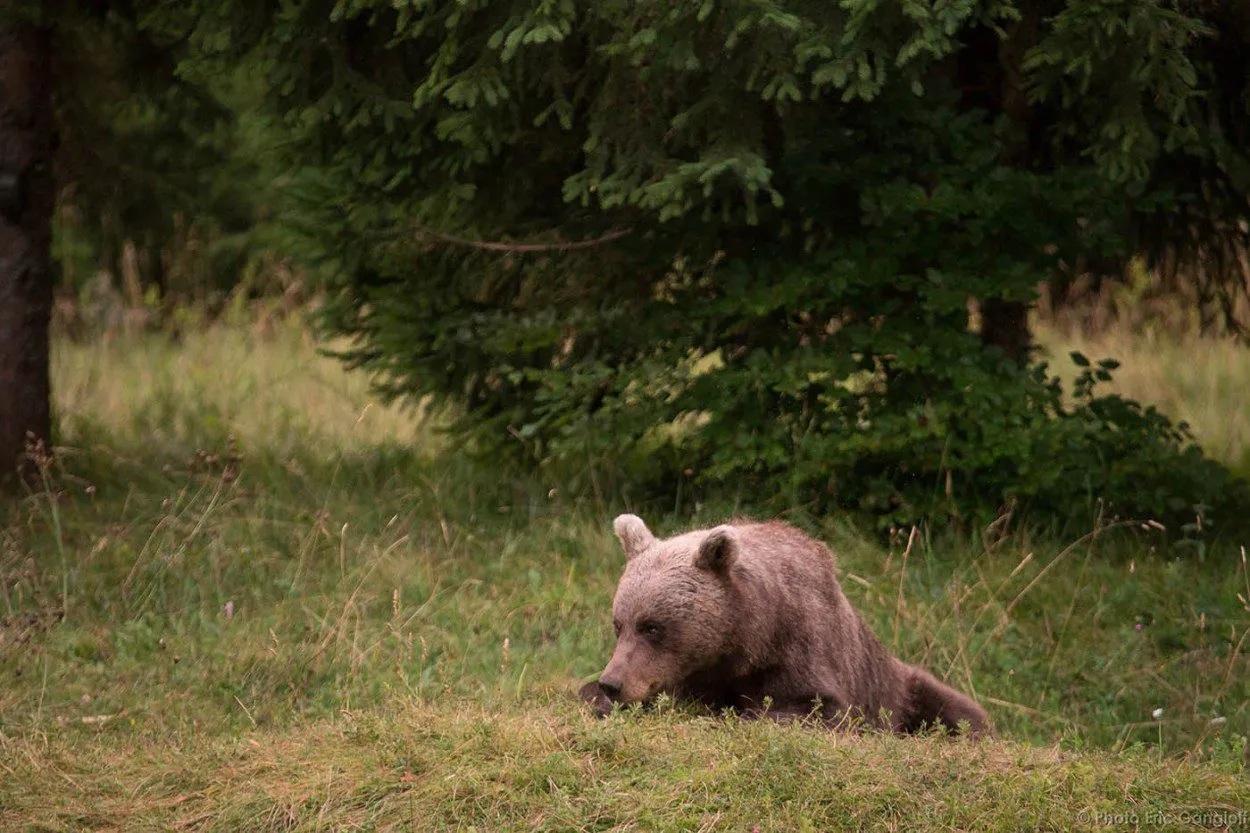
Since we represent the greatest threat to bears than vice versa, these beasts do everything to avoid contact with us. We usually aren’t even aware of a bear’s presence until it has long cleared the area. If we do see a bear, we most often see it retreating. The most common causes of an actual bear attack are the following:
- an unleashed dog may lead a chasing bear back to the owner,
- a wounded bear may feel like it has a better chance at survival if on the offensive,
- if we unintentionally surprise a mother bear with her cubs,
- if we cross paths with a bear that doesn’t have an immediate escape route,
- and the most unfortunate encounter of all: a bear that has lost its fear of humans (a habituated bear).
An actual attack or false alarm?
The media may quite frequently report of bear attacks, rest assured, statistics show that in Slovenia we record from zero to two attacks a year. These are actual attacks with physical contact. There are a few more close encounters with bears when there is no physical contact, but people still believe they were victims of a charging bear. In fact, the bear was probably trying to flee. It’s hard to differentiate between the two, but if you got mauled by one, you would know.
A bear can stand on its hind legs when meeting a human, which is not a sign of aggression, it’s only checking the surroundings to find a clear path of retreat. It can also show signs of aggression, but in most cases it’s a “false attack”, the purpose of which is to scare away the intruder. In any case, it’s good to know how to behave in such an event so as not to increase the bear’s level of aggression.
How should we react when encountering a brown bear?
If we spot a bear in the distance, it is best to slowly retreat in the direction we came and leave the bear enough room to continue on its way. We never run! If a bear approaches us, but has not yet noticed us, we warn it of our presence in a controlled tone of voice and slowly retreat.
If we find ourselves in the immediate vicinity of a bear, even if it’s a bear with cubs, we stop, stay calm, and begin to slowly retreat in the direction we came. We move slowly, without making any quick movements or screaming. It’s important not to give the bear the feeling of being threatened. In the event of an attack by a mamma bear, we should refrain from defending ourselves. Yes, pretending to be dead actually works. The best approach is to stop or lie down slowly on the ground, face down. Mamma bear won’t see you as a threat and will move on.
Remember, never try to run away from a bear or climb a tree. Bears are excellent climbers and they can reach speeds of up to 50 km/h. A bear will catch you can within a few meters, regardless of the type of terrain. The exception, of course, is a safe place you can reach in a matter of metres, like a nearby house or your car.
The biggest threat in Slovenian forests is much, much smaller.
Enjoying the woods in Slovenia is not only safe, but comes highly recommended. Ticks are active in Slovenia from early spring to late autumn under the right conditions, with the peak time being from late spring to early autumn. They are hungrier in warmer weather.
Nevertheless, the forest should be, and is, our refuge from the stress and is guaranteed to bring peace of mind. So, go hiking, jogging, cycling or fishing. Fill your lungs with fresh air. If you want to see the big brown bear, go bear watching. If you don’t want to bump into one, keep your dog on a leash, make a few loud noises every once in a while, to alert the Slovenian wild animals of your presence, and most of all: relax.
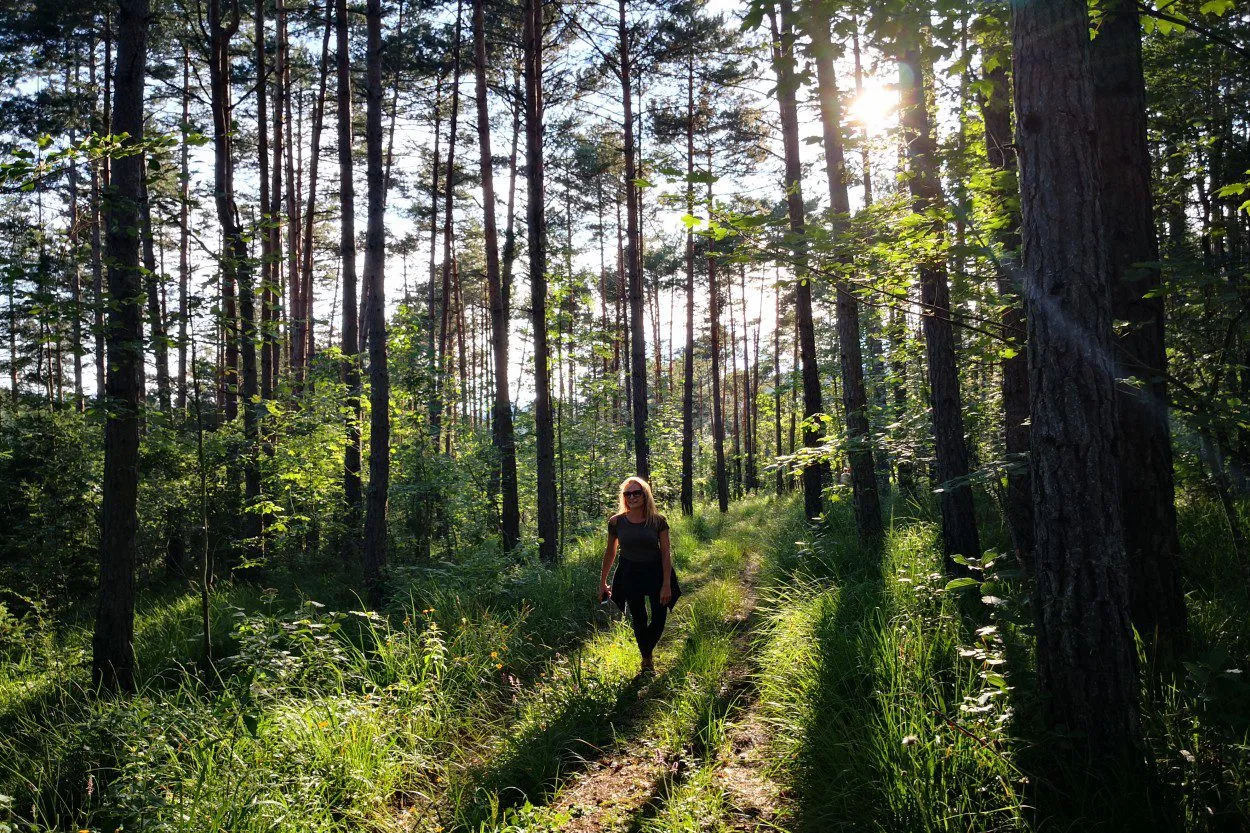
Stay safe, pick up your trash, and have fun in the wilderness!


